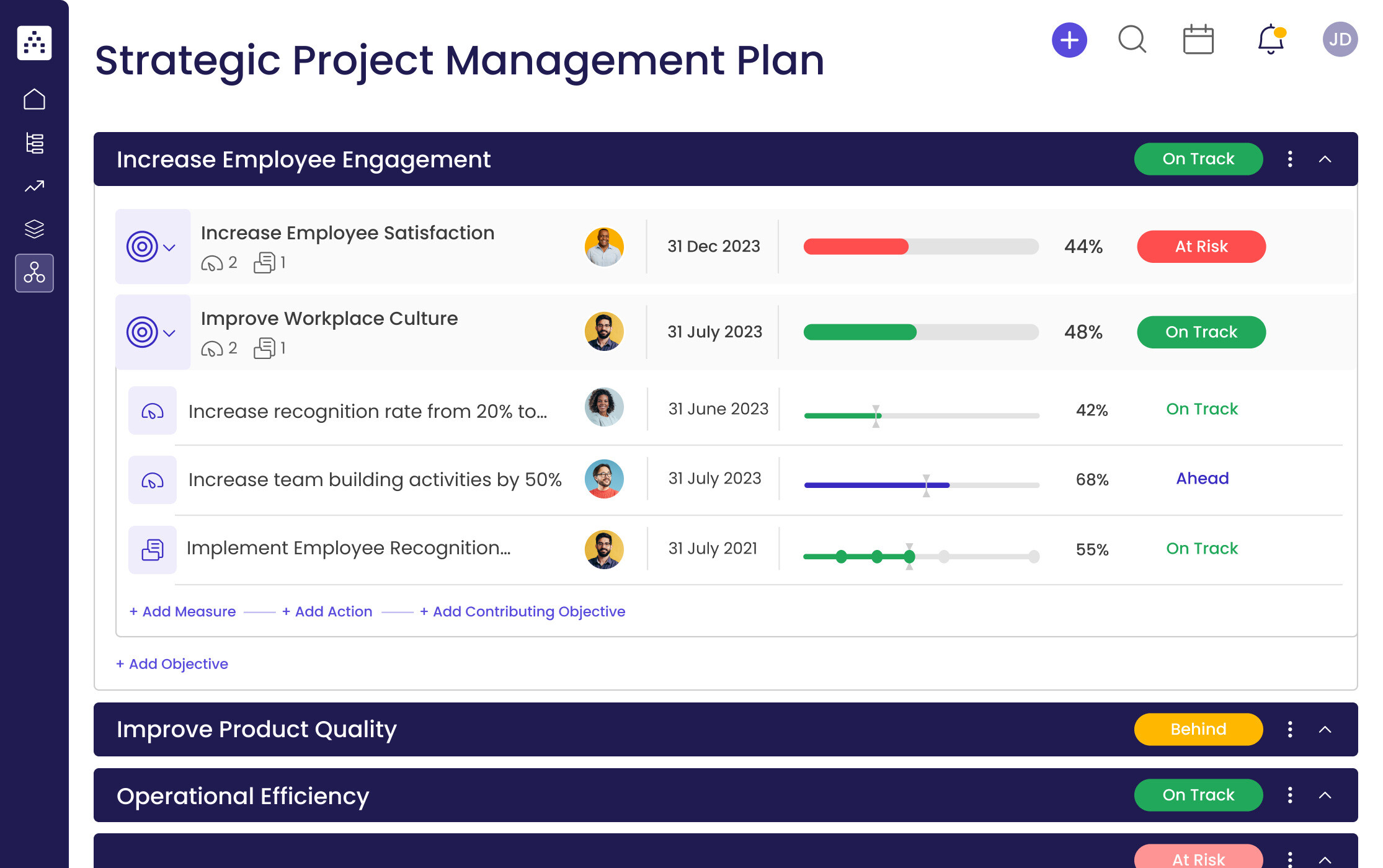What is a Strategic Project Management?
Strategic project management is an approach to managing projects that focuses on the organization's strategic objectives and how the project can help achieve them. It involves developing a comprehensive plan that includes all of the necessary steps to complete the project and how it will help the organization reach its goals. It also involves setting clear objectives, setting measurable targets (KPIs), and implementing related projects to achieve the KPIs.
What's included in this Strategic Project Management template?
- 3 focus areas
- 6 objectives
- 6 projects
- 6 KPIs
Each focus area has its own objectives, projects, and KPIs to ensure that the strategy is comprehensive and effective.
Who is the Strategic Project Management template for?
The strategic project management template is designed to help teams and organizations of all sizes and industries create a plan to manage their strategic projects. With this template, businesses can create measurable targets (KPIs) to tackle the project's objectives and easily manage their projects to ensure success.
1. Define clear examples of your focus areas
The first step in creating a strategic project management plan is to define clear examples of your focus areas. Focus areas are the main goals that the project is trying to achieve. For example, if the goal of the project is to increase customer satisfaction, the focus area would be customer satisfaction.
2. Think about the objectives that could fall under that focus area
Objectives are the specific goals that will help the organization reach the focus area. For example, if the focus area is customer satisfaction, objectives could include improving response times, increasing customer retention, and improving customer engagement.
3. Set measurable targets (KPIs) to tackle the objective
Once the objectives have been established, it is important to set measurable targets (KPIs) to help track progress toward the objectives. For example, if the objective is to improve response times, a KPI could be to reduce the average response time from two days to one day.
4. Implement related projects to achieve the KPIs
Once the KPIs have been established, it is important to implement related projects to achieve the KPIs. For example, if the KPI is to reduce the average response time from two days to one day, the related project could be to increase staffing from 10 to 20 people.
5. Utilize Cascade Strategy Execution Platform to see faster results from your strategy
Cascade is an online platform that enables teams and organizations to create, manage, and track their strategic projects. With Cascade, teams can easily manage their projects, set measurable targets and track progress, and quickly see results from their initiatives.


